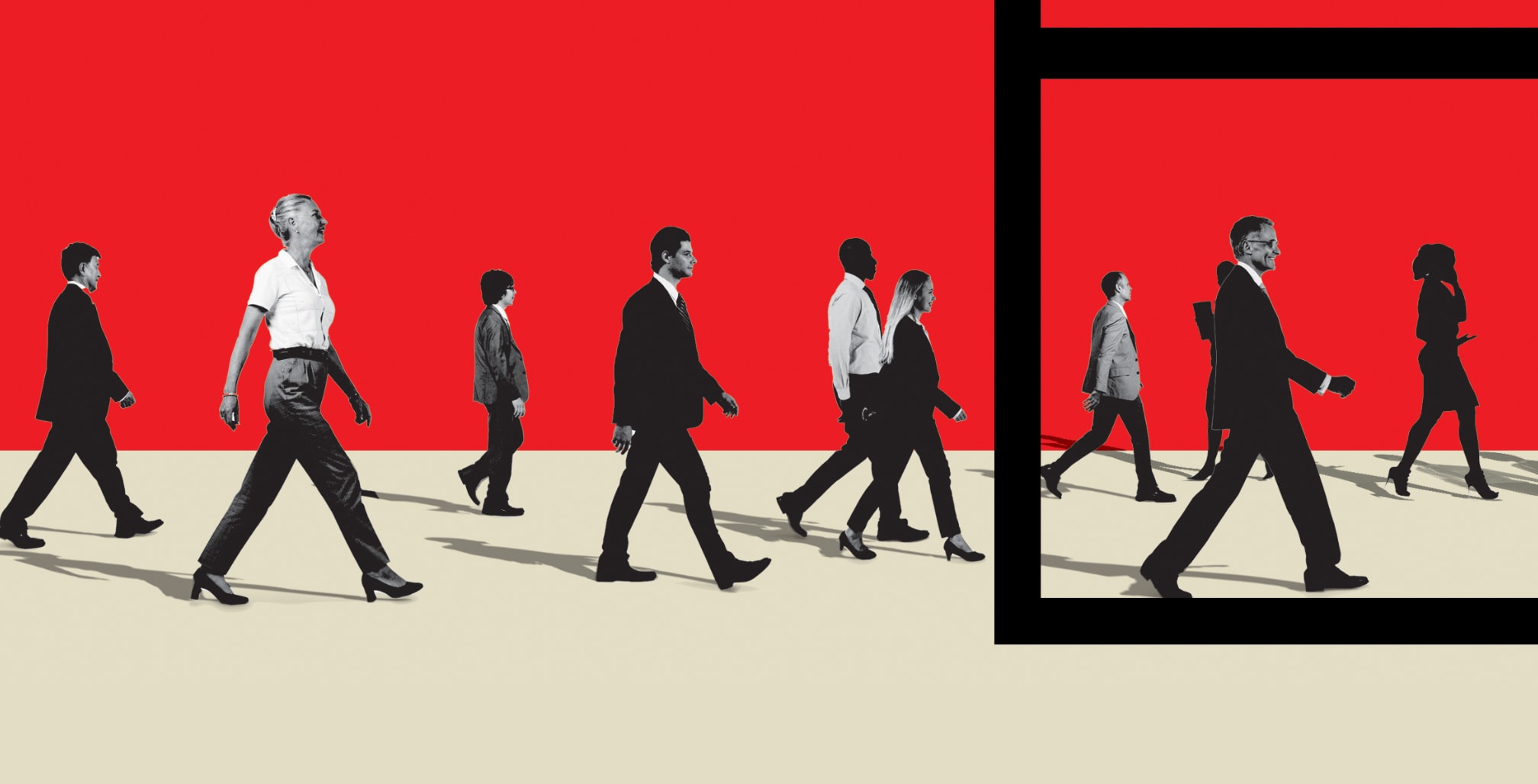A Short History of the CEO Role
The CEO role has been around for about a century, emerging with the advent of the modern corporation, whose managerial structure calls for individual executives to run different business units and functions. The CEO has always sat above them all—but across generations and business eras, from Henry Ford to today’s disruption-hungry, jeans-wearing billionaires, the role has never stayed static for long.
Executives have always adapted to new challenges; what has changed is the speed and urgency with which these arise and with which CEOs are expected to deftly address them.
“Things didn’t come at us as fast 50 years ago,” says Timothy Quigley, associate professor of management at the University of Georgia’s Terry College of Business. “A CEO from 1950 had a certain number of business-critical decisions maybe once or twice in a tenure. Now, CEOs face the same kinds of decisions, but perhaps several times a year.” Share on X
The accelerating pace of business and rising market volatility are certainly driving this trend. But it also may have something to do with the increasingly complex stakeholder landscape that companies and their chief executives must navigate. Today’s CEOs understand that their success no longer depends solely on profit margins and happy investors. Rather, they must manage a growing portfolio of interests, from sustainability and diversity initiatives to data privacy concerns. Some giants are putting this shift in writing. Walmart, for example, in its 2018 annual report declared that the company operates for the benefit of “all stakeholders, including suppliers, communities and society in general.”
This shift toward what has been dubbed stakeholder capitalism is the next chapter in the history of the CEO. “The latitude or discretion that a CEO has today is far greater than it was in the 1950s or before,” says Mr. Quigley. “There are more tools and levers at their disposal.” Today’s CEOs can wield more influence over the fortunes of their enterprises.
The data backs this up. Mr. Quigley and his co-authors found that in the 1950s and 1960s, CEOs accounted for roughly 10% of their company’s performance. By the 2000s, this influence had more than doubled. The findings corroborated another of their studies, showing that a CEO’s sudden death triggered much greater company gains and losses in the 2000s compared to similar circumstances 60 years before.
“A CEO from 1950 had a certain number of business-critical decisions maybe once or twice in a tenure. Now CEOs face the same kinds of decisions, but perhaps several times a year.”
—Timothy Quigley, associate professor of management, University of Georgia
The Managerial Job
At the end of the 19th century, industrial capitalism, driven by the innovations of steam power and cheap steel production, led to the creation of a new breed of complex organizations. It was a period of highly concentrated ownership, says Eric Hilt, professor of economics at Wellesley College and a research associate at the National Bureau of Economic Research. “Relative to big public companies today, these firms had fewer shareholders,” he says.
When J. Pierpont Morgan Sr. and a group of investors bought Carnegie Steel in 1901, the nearly $500 million sale created the U.S. Steel Corp., an organization with 200 subsidiaries and a workforce of more than 168,000 individuals. It was the largest company in the world at the time.
Corporations with such unprecedented scale needed a new type of business leader—someone with the strategic vision, personality and social capital to command authority over a complex and often dispersed organization.
“When you get these very big firms with lots of employees and hierarchies and also lots of divisions, then you start seeing professional CEOs,” says Carola Frydman, professor of finance at Northwestern University’s Kellogg School of Management. “It’s the beginning of the managerial job.”
By the 1920s, inventors such as Thomas Edison and Mr. Ford—the tech titans of their day—introduced a new type of organizational leader to the world. They both possessed technical expertise—pioneering innovation in electrical infrastructure, telecommunications or automobiles—and the business acumen to build successful enterprises around these new technologies.
“When you get these very big firms with lots of employees and hierarchies, and also lots of divisions, then you start seeing professional CEOs. It’s the beginning of the managerial job.”
—Carola Frydman, professor of finance, Northwestern University
Soon, these business leaders began to imagine corporate purpose extending beyond the factory walls. Mr. Ford, for example, became one of the first to see the business sense of better wages and a five-day workweek, believing employees who had more money in their pockets and time to relax would buy more products.
After World War II, a new reality emerged. To finance growth, long-reigning founders took their companies public. To foster expansion, organizational charts grew more complex, accommodating new divisions and product lines. Conglomerates multiplied. Chief executives with deft planning and coordination skills were demanded.
But this meant that while a company president might be leading a larger business, he (and it was always a he) also had less real power than his predecessors, Mr. Hilt explains. “Your authority was weaker,” he says. “You’re presiding over this big bureaucracy as opposed to calling all the shots. It’s a super-diversified business.”
The 1960s brought the rise of computational approaches that turned business elements including finance, operations management and strategy into structured and analytical practices. Company leaders were armed with high-level objective data to support their decisions. With this came the emergence of new voices such as Peter Drucker and Herbert Simon, whose ideas would shape generations of executive leaders to come.
A New Model Takes Shape
In the 1970s, with the onset of globalization, political conflict in markets across the world brought greater economic uncertainty and opportunity. Western firms, once supreme leaders in their industries, faced much greater international competition. (Japan would emerge as the first Asian global economic superpower.) This new competition would have a profound impact.
“The managerialist world of these big, highly diversified, bureaucratic firms starts to wither away as they face more competition,” Mr. Hilt explains. Legacy organizations quickly understood that their large, often bloated, structures were liabilities. To contend, companies shed noncore units and management layers—the layers built up during the merger-and-acquisition era of the 1960s.
Milton Friedman had famously summarized this new era by declaring that corporate managers exist to “make as much money as possible” for shareholders, while “conforming to the basic rules of society.” Corporate stewardship became the principal mandate for CEOs and their boards, with the goal to maximize earnings above all other priorities. And CEO compensation, largely flat since World War II, began to rise.
New and leaner corporate structures placed greater responsibility on CEOs, making them even more critical to the bottom line. By the 1980s and 1990s, CEOs were making the tough decisions to shutter divisions, move manufacturing overseas, eliminate waste and mastermind key mergers. The changing global economy brought changes to the CEO’s responsibilities—especially in long-established firms looking to modernize. Many firms sought new CEOs as turnaround artists—leaders with the specific and strategic acumen to overhaul an organization quickly. Neither lifelong employment at the company nor technical mastery of the industry or product was a prerequisite.
As large legacy companies began to disintegrate, markets grew more competitive, Mr. Hilt says—and the speed of business accelerated.
Perhaps no change more significantly underpins the CEO’s current profile than the inexorable rise of cable news, which began in the 1980s. While John D. Rockefeller and Andrew Carnegie were no strangers to media attention or governmental scrutiny, CEOs were suddenly forced to speak directly to investors and customers (and employees) with clarity and vision. The new pulpit, now expanded (and complicated) by social media, means CEOs can do much more to immediately right the ship when problems arise.
“The one category of CEO decisions different today than any time in history involves dealing with crises, scandals, potentially negative news, those types of things,” Mr. Quigley says.
Specialists Wanted
Globalization brought a shift in the economic makeup of the West. Manufacturing receded and the tech sector flourished as the border between “tech companies” and others began to blur. The shift from physical assets to intellectual and digital ones has profoundly affected executive teams and leaders—exemplified in the growth of executive teams in the U.S., which have doubled in size on average since the mid-1980s, according to researchers at Harvard Business School. Organizations, now built on a greater diversity of products with a deeper focus on technology, have invested in specialist leaders rather than general managers to help direct increasingly complex programs.
It is a transformation that played out at all levels of the organization. “You’re probably not offering high-paying entry-level jobs with opportunities to advance like IBM in the 1970s,” Mr. Hilt says. “You’re hiring a small number of really talented, well-qualified, skilled people.” Companies will continue to focus on efficiency and talent to stay competitive in the future. They’ll be flatter, slimmer and more collegial, Mr. Hilt says. Even established firms will likely have a smaller total workforce than before.
Disruptive technologies have triggered a reevaluation of the traditional CEO role. From Microsoft and Apple in the 1980s to Facebook and Google in the 2000s, the emerging tech industry offered CEOs in a new mold—younger, informal and sometimes unpolished. These leaders were different than the well-groomed uber managers of previous generations. What they did possess was genius, audacity and the ability to see well beyond their product or industry. This shift is already having a profound impact on the future of the CEO role, Mr. Hilt says, perhaps pointing to boards with more open-minded views on executive hiring.
As perspectives broaden at the top, so too will organizations’ strategic frames and sense of responsibility. CEOs are on the cusp of a shift back to deeper, longer-term thinking—something that business drifted from in the 1950s, Mr. Quigley explains. And while the average CEO tenure at large-cap companies has dropped over the last five years, research from Harvard suggests that today’s best-performing firms hold on to their leaders for 15 years on average—one indication that long-term thinking will remain important.
Twenty years ago, for example, a CEO might have thought a goal of zero landfilling was a bad idea—a cost with no benefit—Mr. Quigley says. But many executives today are finding elegant ways to align stakeholder interests with those of shareholders, seeing that a zero-landfill policy also means saving on material costs and labor, while inspiring customers and motivating employees.
“Certainly CEOs need to act in the best interests of shareholders,” Mr. Hilt says. “But if you start from a position that all you care about is shareholders, it becomes very difficult to see opportunities for profits that are rooted in the community.”
This article appeared in the Spring 2020 issue of IQ Insigniam Quarterly, with the headline “A Short History of the CEO Role.”





